#/ just a little cosmic entity with insane amounts of power and knowledge
Explore tagged Tumblr posts
Text


working on icons and thinking about my funky little guy s'more...
#❪ ⠀ ✦ ⠀ ─── ⠀ the collector / visage ⠀﹕ ⠀this is the goodest i've felt in forever and ever! ⠀ ❫#❪ ⠀ ✦ ⠀ ─── ⠀ missallanea / edits ⠀﹕ ⠀missa's back on her shit. ⠀ ❫#/ i just love them a whole bunch. just a little guy.#/ just a little cosmic entity with insane amounts of power and knowledge#/ who just wants to play games and have friends gdi
8 notes
·
View notes
Photo
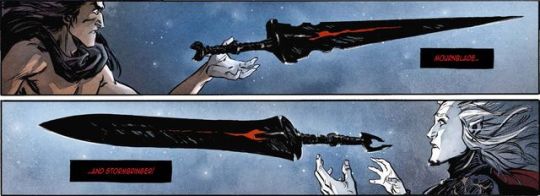


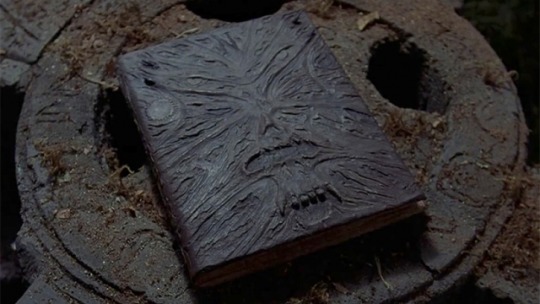
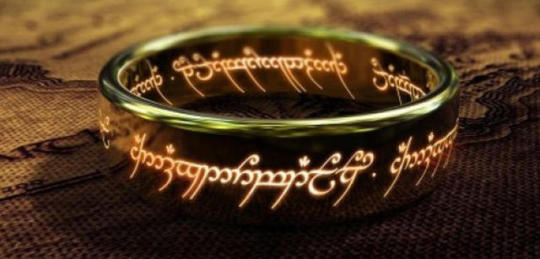
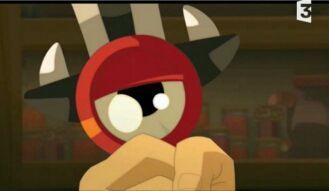
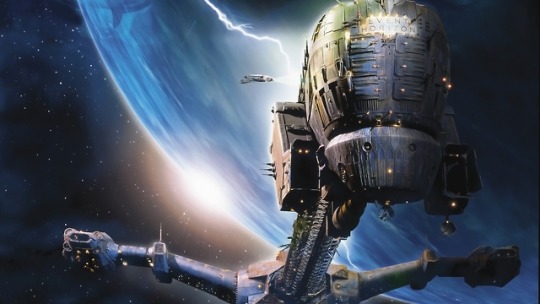

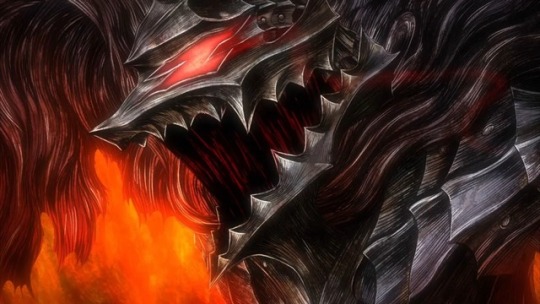
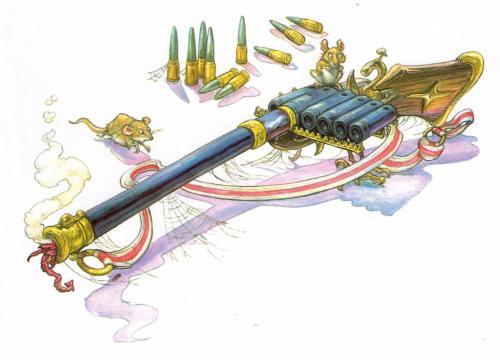
30 Day Monster Challenge 2 - Day #16: Favorite Evil Weapon/Object
1. Stormbringer (Elric of Melnibone)
The Black Blade. Daughter of Arioch. The Stealer of Souls. One of the single most legendary swords in all of fantasy, present in every universe in at least one form or another. A demon of chaos bound by the Lords of Law into the shape of a weapon. Whoever wields it can drain the souls from whoever they stab and sustain themselves with it, but is driven by a terrible hunger. The Black Blade has a will of its own, and it howls for blood as it is swung. In short, the definitive evil weapon.
What makes Stormbringer stand out from its later imitators, and even previous legendary evil weapons, is how it affects its primary wield, Elric of Melnibone. As an albino, Elric is sickly, and usually uses medicine and dark magic to stay alive. But abroad in the Young Kingdoms, Elric has to rely on Stormbringer to survive. Even as Elric connects with people outside his home kingdom, they are bound to die whenever he needs to stay alive, no matter how much Elric tries to fight it. Stormbringer is essentially a manifestation of Elric’s burden as the Champion of Balance, but also his greater isolation that distances him from being able to make connections. Elric makes it clear that Stormbringer isn’t some kind of ultimate weapon, it’s a crutch, a drug that ultimately consumes its user. And in the end, that’s what happens to Elric; when the entire universe is consumed by chaos, Stormbringer finally turns on Elric before disappearing into the apocalypse.
2. Soul Edge/Soul Calibur (Soulcalibur)
So this is honestly cheating, but I just can’t pick between the two swords. Soul Edge is the clear Stormbringer descendent and looks rad as hell to boot. Even more that Stormbringer, Soul Edge looks like a living, breathing monster. It can even shapeshift into weapons that aren’t sword, and it had an entire life cycle in Soulcalibur 2. But Soul Edge never really stopped being the ‘bad’ sword. It’s counterpart, Soul Calibur, on the other hand, started off as the ‘good’ sword. But as the series went on, Soul Calibur began to change. In Soulcalibur 4 it was hinted that Soul Calibur might have a mind of its own as well, and it might not have the purest intentions. By Soulcalibur 5, the plot hook came to fruition; Soul Calibur is just as dangerous as Soul Edge and wants to trap the world in a perfect unchanging state. The swords have become the embodiments of Law and Chaos; the Michael Moorcock reference comes full circle. All we need now is a game where Soul Calibur is out of control and the only thing that can stop it is Soul Edge.
3. The Terror Mask (Splatterhouse)
The Terror Mask has sass, the Terror Mask has a personality. Half these evil artifacts are just kind of generically malevolent; they won’t yell at you in Jim Cummings’ voice and call you a pussy when you notice one of your arms is missing. There’s a surprising amount of lore invested in the Terror Mask. An entity from the space between spaces, it fled the cosmic horror gods until they bound it in a bone mask. Now it’s out to settle the score, and whoever is wearing it just happens to be along for the ride. Granted, the wearer of the mask turns into a hulking slasher ogre that is almost impossible to kill. The Splatterhouse games are a gateway into the video game id, replete with monsters, ultra-violence, and a hero so buff he puts the ‘masculine’ in ‘toxic masculinity’. The Terror Mask, like in the game, is just a way to get to that special kind of hell.
4. The Necronomicon Ex Mortis (Evil Dead)
The Necronomicon Ex Mortis is probably the most famous evil book in the world, probably more so than Lovecraft’s original Necronomicon. (Frankly, I could do an entire list on favorite evil books, but we’ll get there when we get there.) The Ex Mortis really doesn’t have a lot to do with Lovecraft besides the name, other than that they are both old, sanity-rending, and bodies of literature. But, being honest, the Ex Mortis is just the more fun of the two. The Ex Mortis is the party-boy of evil books to the original Necronomicon’s Ivy League scholar. It’s such an embodiment of Sam Raimi horror; gory, campy, with a bit of slapstick thrown in, and its mere presence causes weirdness to happen. The Necronomicon Ex Mortis contains knowledge of things man was not meant to know, and it knows it. It’s mischievous, and it’d almost be lovable if it wasn’t also full of immensely powerful black magic.
5. The One Ring (Lord of the Rings)
I’ve always been interested by the concept that the One Ring can think for itself. The One Ring is, ultimately, an incredibly loyal evil artifact, and is only interested in new yielders insofar as they can deliver it back to Sauron. The Ring really is an apt counterpart for the hobbits; a little thing, defenseless, almost useless at first glance, but capable of changing the world. The Ring also has a pedigree, of course. It shares more than few traits with the Ring of Nibelung from the Wagnerian cycle of operas of the same name. The Nibelung Ring, like the One Ring, can grant the wearer power over the world, but only if they renounce love. In time, the covetousness of men and gods for the ring destroys the world and brings about Ragnarok. The One Ring is a reflection of the Ring of Nibelung, but also vastly different in many respects. It brings about the end of the gods and immortals, but only because they were staying to try and destroy it. The end of the Ring and of Sauron grants the world the ability to move into the next age, the age of mankind, which reflects not only Tolkien’s notions about divinity and its place in human existence, but I think also his faith that people can rise to their best in the changing times.
6. Rubilax (Wakfu)
Rubilax is the only evil weapon here to have a character arc. Granted, that’s because he’s actually a demon bound to a sword, but whatever. Rubilax starts out as your typical evil sword, trying to possess the (idiot) paladin bound to guard him. Not to make it a contest, but he gets pretty far, to the point that said paladin has to release Rubilax and fight him in a bare-knuckle fist fight into submission. After that, things get kind of complicated. People die, souls are displaced, there’s a colosseum death match, and Rubilax has to make some calls about his moral character, so to speak. In the end, Rubilax decides to side with the good guys, and even gets along with the paladin’s kids. So he’s less of an evil weapon and more of just a demonic one, but he’s definitely the most nuanced character here.
7. The Event Horizon (Event Horizon)
The Even Horizon is pushing the definition of ‘evil object’. It’s really more of an evil place, which might also be worth a look sometime, but for now a ship counts as an object. There’s plenty of sci-fi stories that try to do the cursed spaceship deal, but I feel like Event Horizon is the only one that really captures the gothic horror aspect. I think we tend to forget that architecture, aside from its practical usage, is also meant to convey ideas and thoughts as much as any other form of artistry, and was one of the more important forms of public communication before the spread of reading. The architecture of the Event Horizon is the words to a spell, the three-dimensional incantation that opens the gates of Hell. It was a morbid, dark temple to man’s ignorance even before it went into other dimensions. Once it returns, it hungers for more; a cursed ship bound to always return to its home port on the other side. Something about the Event Horizon reminds me of the Rime of the Ancient Mariner; the way the ship is warped and changed by sailing through strange waters, and how the survivors are bound to relive the curse over and over again. That’s why the Event Horizon is my favorite ghost ship in science fiction.
8. The Marker (Dead Space)
The Marker draws directly from Event Horizon, and they both share the concept of wordlessly communicating a kind of madness to the people who view them. The Marker, though, takes it to a new extreme, in that it has a literal insanity aura that causes hallucinations, paranoia, and aggressiveness. An interesting way that the Marker is more ‘alive’ than other evil objects is that it is self-propagating; part of the madness it transmits is the formula necessary for its replications. But what I find most fascinating is how the Marker can transmit information that changes DNA, altering people on the cellular level to turn them into Necromorphs. That kind of power, to change biology through information, is nothing short of magic in most other settings.
9. The Berserker Armor (Berserk)
You can’t fight demons if you ain’t cute. The Berserker Armor was forged by dwarves for the explicit purpose of fighting demons and monsters. It draws on the rage and negative energy inside a person to give them incredible strength and agility, but at the price of slowly draining their senses. The Skull Knight originally made it for himself, but even he was scared off by the armor’s power. Now Guts has it, and he has a lot of rage to give. I think the most fascinating thing about the armor is how it changes and molds itself to how Guts’ uses it. It didn’t start off with a giant wolf helmet; that’s just Guts’ personal totem representing his inner darkness. But when the armor drew on that, it changed shape, and when Guts holds himself back, it stays restrained. Still, the armor takes a lower spot because it itself isn’t evil, it just draws on a person’s internal negativity; it’s all up to the wearer on how much they use it.
10. The Gonne (Discworld)
Discworld is full of anachronistic magical devices, and they’re all usually cause for some kind of concern. The Gonne was at the center of a fairly elaborate murder plot involving the Assassin’s Guild and the Night Watch, but was finally put a stop to. Like any good evil weapon, it whispers promises of power to whoever happens to be holding it at the time, and is also a little trigger-happy. But the Gonne and its metaphor for firearms gets kind of overshadowed by everything happening around it, and it even gets acknowledged as a powerful and worthy weapon in its own way by the end.
#30 Day Monster Challenge 2#30 Day Monster Challenge#soul calibur#lord of the rings#dead space#wakfu#evil dead#berserk#long post
134 notes
·
View notes
Photo
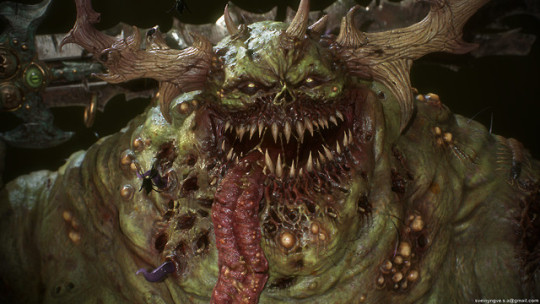
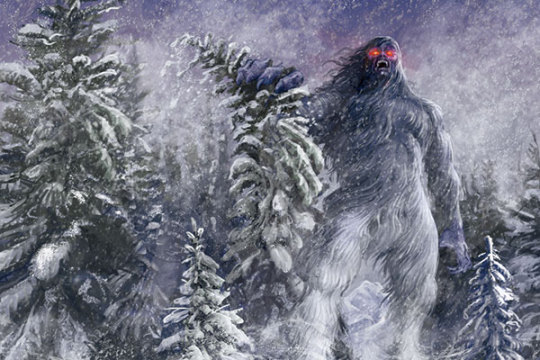
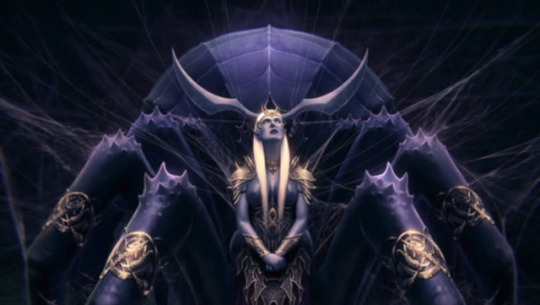
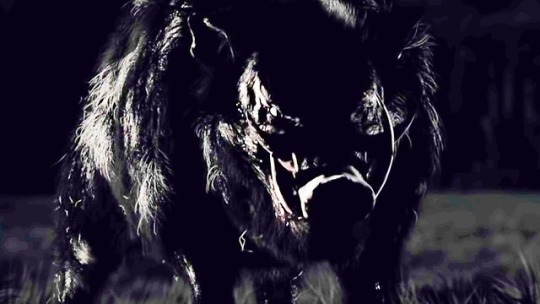
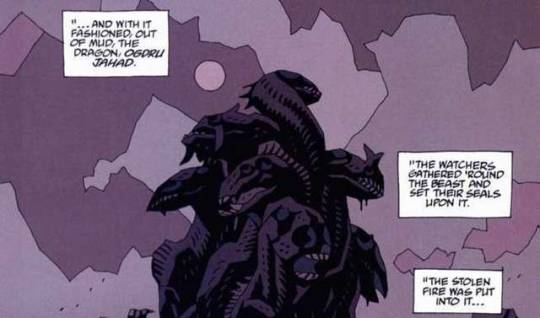
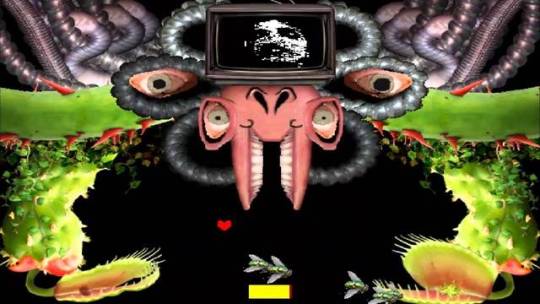
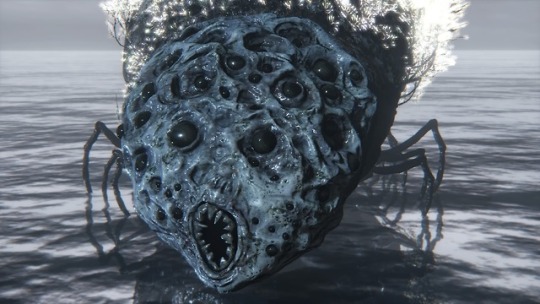
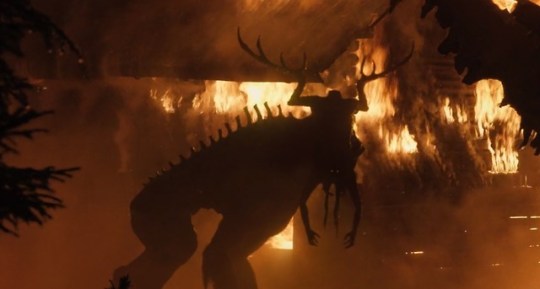
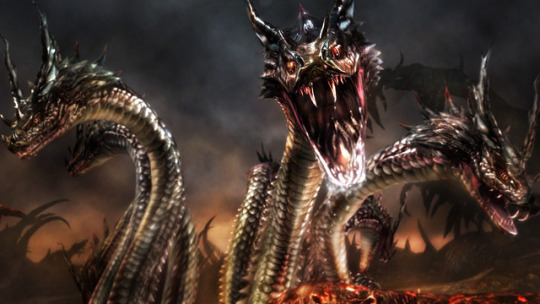
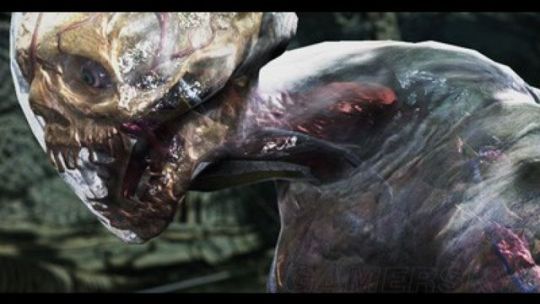
30 Day Monster Challenge 2 - Day #15: Favorite Great Old One/Monster God
1. Nurgle the Great Unclean One (Warhammer)
I think you can tell a lot about a person by knowing which of the Chaos Gods is there favorite. I’m not saying there’s a right answer, but I’ve always been a Nurgle man myself. Nurgle is more than just the daemon god of disease and entropy; he’s the god of the value of life. Nurgle loves all of his children equally, down to the smallest virus. It can be hard for people to accept that, to realize that they have as much cosmic significance as a single-cell organism, but that’s just because they don’t realize how much love the Urfather has for that little cell. In Nurgle’s phlegmatic embrace, all of us are equal, regardless of race, gender, or cell count.
Nurgle asks only that you spread the love he has so willingly given, so that all may be his children. Death and disease are natural parts of life; we struggle to fight them so, but they always come back to us. Through Nurgle, we may exalt in the power of pus and the greatness gangrene. We grow stronger with each infection, and every tumor is a sign of endurance. We do not die when the Plague Bearer calls us; we merely transform for the vermin and bacteria that consumes us, to be reborn in the eternal cycle. Truly, Grandfather Nurgle moves in wondrous ways.
2. Ithaqua the Wind Walker (August Derleth)
It should come as no surprise that the god of all wendigos is one of my favorite Great Old Ones. The Ithaqua Cycle is probably the best thing August Derleth wrote, for what ever that’s worth. Ithaqua is just such a chilling god; the image of some skull-faced giant thing turning around a mountain is the stuff of nightmares. Ithaqua is the primal urge inside life, the need to do anything to survive in an unrelenting environment. He walks in the cold places of the world, but also in that cold space between worlds, spreading his cannibalistic madness from world to world. Ithaqua himself seems hardly necessary, or the countless wendigos that follow him. It’s the chaos and horror he causes between people in a desperate situation, pitting one man against the other and breaking taboos until only the strongest is left. Ithaqua is the cold and brutality of the North personified.
3. Lolth the Queen of the Demonweb Pits (Dungeons and Dragons)
Lilith is so pastiche these days. You know where the real rebellious queen of evil action is at? Spiders, man, and Lolth is the Spider Queen. Lolth has been in Dungeons and Dragons since the beginning. Wherever the dark elves go, Lolth goes too, like any deity, and her absence from a setting is noticeable. She’s one of D&D’s greatest villains, and countless adventurers have lost their lives in the Demonweb Pits. Her entire realm is an arachnid hell crawling with spiders as small a mite to as big as her spider-golem palace. Lolth is an entity of contrasts; her priesthood is a strict matriarchy, but Lolth herself is absolutely insane. It’s hard to tell if there’s anything left of the elf goddess she used to be. Beneath the layers of scheming, beauty, racially motivated hatred, and plans to conquer the known multiverse lies a beating heart of blind hunger, an overwhelming instinct to survive by strength alone.
4. Saaitii the Hog (William Hope Hodgson)
Saaitii is actually what got this particular entry in the challenge. See, I wanted to do just ‘Top 10 Great Old Ones’, but then I was worried that not everybody would know what the Great Old Ones are and it’s kind of an arbitrary category that Lovecraft wanted people to change from story-to-story for fun, so then I just broadened the category to ‘monster gods’ and now here we are. Anyway, Saaitii is a monster that William Hope Hodgson’s occult detective Thomas Carnacki encountered in his monster-hunting stories. The locals tell Carnacki that Saaitii is the ghost of a boar wrongfully killed long ago, but Carnacki suspects that it’s an extradimensional something using the spirits of dead hogs to try and come through.
First off, I just want to know what William Hope Hodgson’s deal with pigs was. This is explicitly his second pig monster story, following the pig men from The House on the Borderlands. But the usage of that aesthetic is definitely refreshing a little unsettling. In an age of meme-tentacles, we need new and different cosmic horrors. Pigs can be disturbing; we think of them as cute at best and filthy at worst, but rarely evil or malevolent. Even the meanest boar has a kind of nobility to it. But the Hog brings up images of mindless, vicious cruelty, dark things in the forest and filth. The concept of a higher life form like some extradimensional whatsit coming into our world through ‘lower’ lifeforms strikes a little close to the karmic bullseye for some, turning the tables on humanity and reminding us that in the eyes of the cosmos, we’re just so much more food.
5. Ogdru Jahad the Seven Who Are One (Hellboy)
You’d think there’d be more dragons on the list, but so far it’s just the one. Seven. 369. Whatever. The Ogdru Jahad are the Hellboy/BPRD universes Great Old Ones, and the source of… a sizable amount of trouble there. Not all of it, but most of it. At the dawn of time, the Sons of God formed the mud of creation into seven great dragons that were filled with the shadow of the moon, for whatever reason. Things would have been fine and dandy there, but one little angel named Satan, for reasons that are still unclear, took the fire of God and filled the dragon with it, giving the Ogdru Jahad life. The Ogdru Jahad birthed their 369 offspring, and the angels had to fight them off before the whole Creation thing could get rolling. From that day on, every human culture has been warned about the Ogdru Jahad, and they have been ingrained in the human consciousness as the Dragon, from Tiamat to the Beast of Revelations.
It’s a nice fusion of Judeo-Christian Biblical lore and cosmic horror. I honestly don’t think it would work if it wasn’t for the fact that Satan is notably absent from the Hellboy series and, as of BPRD: Hell on Earth, the Ogdru Jahad are winning, where even their smallest children can cause natural disasters. I love conflating the image of dragons with cosmic monsters. Cthulhu as Leviathan, flying polyps as oriental dragons, hunting horrors as wyverns; it’s a direct play to the archetype that both types of creatures fill. The Ogdru Jahad illustrate that perfectly, simultaneously something the most modern of cosmic horror and the most ancient of monsters.
6. Flowey the Flower (Undertale)
Flowey’s final form gets in on design alone. There aren’t a lot of monster designs that actually freak me out, but Flowey is just horrible. Of course that’s also because it’s a genius bit of sprite animation, with the usage of textures contrasting so hard with the rest of Undertale. It looks like something that ate its way inside out from at least three Madoka witches. The claws, the eyes, the mouths; it all makes something perfectly awful and abhorrent. And, of course, the music. I actually think Flowey’s boss theme rates pretty low compared to other Undertale boss themes, but the title is just something else. How are you supposed to do better than “Your Best Nightmare”?
7. Rom the Vacuous Spider (Bloodborne)
It’s Rom. C’mon. Look, I know she’s not actually a Great One; she’s Kin, like Mergo’s Wet Nurse. But look at her. When I think, “What’s my favorite eldritch monstrosity boss from Bloodborne?” I keep coming back to Rom. Just look at her dumb, stupid face. One of her attacks is just falling over. That’s the most relatable a video game has been for me since I was an undergrad. Rom doesn’t want to hurt anybody; she’s just a giant, stupid bug/fungus thing. You could just walk away, man. You could just leave poor Rom alone. She’s doing her best trying to grant people eyes and you’re over here hassling her. In front of her kids, man. Just leave her alone.
8. Moder the Bastard of Loki (The Ritual)
Y’know, as a jotun, this guy could have been on the giant list, but I feel like its design and concept are too unique for that. This is a special monster, a kind of revelatory creature. Its design is just out of this world, blending human and stag and those creepy little eyes. But there’s so much more to it than just a great design. Its ability to create illusions essentially gives it access to shapeshifting, tying it to the actual mythology of Loki and Norse giants. The actual ritual to appease Moder, where it picks a person up and impales them on a tree, is reminiscent of the story in Norse mythology where Odin impales himself on the World Tree Yggdrasil to gain the knowledge of the runes. Before a person is killed, Moder shows them something precious to them, or a defining moment in their life; it is, in its own way, giving the person a revelation about what is vital in their own universe. Moder, like any good monster, delivers a message about the meaning of reality to the people it encounters.
9. Set the Slithering God (Conan the Barbarian/Marvel Comics)
I like this comic book version of a god. The actual Egyptian deity Set is fairly complex, and actually examining his character and divine portfolio gives insight into how Egypt’s culture changes over time. Comic book Set, on the other hand, is the god of snake villains. He is the snake villain to end all snake villains. Marvel cooked him up for their old Conan comics based off an offhand mention in one of Robert E. Howard’s stories because they needed Conan to have a nemesis. So Conan’s nemesis, the arch-wizard/priest Thoth Amon, worships the dark god Set, regardless of the fact that Thoth Amon appeared exactly once in the very first Conan story. Now, it’s fifty years later and Set is apparently one of Marvel’s Primordial Ultra-Deities.
It’s that mixture of traditional myth and the cosmic I like again, though this time it’s less H.P. Lovecraft ‘cosmic horror’ and more Jack Kirby ‘cosmic action’; new gods and a new mythology for a new medium, but still the same old story. Set is the Serpent, like the Ogdru Jahad, manifesting in human lore as everything from the serpent in Eden to Leviathan. He was the first murderer, able to absorb the power of any other god he ate, and even today he seeks reptile supremacy. Wherever there is Set there are snakes, enacting the cosmic cycle of death and rebirth while lounging in decadence.
10. Haos the Ultimate Bio-Weapon (Resident Evil 6)
… We’re going to do this now, and then we’re never going to do it again. Because we’re going to talk about something good that was in Resident Evil 6. One of the most infuriating things about RE6 is that it had some of the most incredible monster designs in the Resident Evil series. Great designs. The kind of monster designs that other games only wish they could achieve. And they were wasted on one of the worst games the series has produced. One of those designs was Haos, the apparent ultimate bio-weapon engineered by (ugh) Neo-Umbrella in a secret facility at the bottom of the ocean good lord I’m putting this on a list with William Hope Hodgson.
Haos deserves a better game; its design is unnecessarily fantastic. It looks like a ningen crossed with a jellyfish. It’s some far future stage of human evolution driven to its most extreme and bizarre form. There’s something forlorn and sad about it, but also beautiful and powerful. Its concept is purely apocalyptic; Haos will rise from the bottom of the ocean before it finally dies and dissolves into a gas that will spread across the world, turning humanity into zombies and monsters. Herald of a world of gods and monsters and all that. Even its name is kind of cool; ‘Haos’ is literally Siberian for ‘chaos’. And every day I have to wake up with the knowledge that this wonderful, horrible monster was stuck at the end of a Resident Evil 6 campaign. It’s depressing. So here’s to good old Haos; at least here you’ll get some respect.
#30 Day Monster Challenge 2#30 Day Monster Challenge#Great Old Ones#Warhammer#Nurgle#Dungeons and Dragons#Lolth#Hellboy#Undertale#long post
102 notes
·
View notes